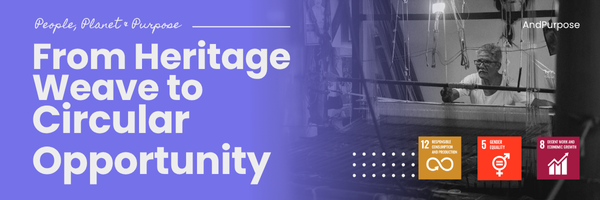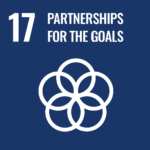For over five millennia, silk saris have carried India’s story of continuity, community, and craft.
Archaeological finds from the Indus Valley Civilization (c. 2800–1800 BCE) show early evidence of woven drapery, a precursor to what would become the sari, a garment that continues to evolve with every generation (ShodhKosh Journal, 2023). By the 16th century, weaving centers such as Kanchipuram, Murshidabad, and Banaras had become cultural and economic hubs, each known for its distinct silk patterns, motifs, and metallic zari work. These traditions are now protected under India’s Geographical Indication (GI) framework, which links craftsmanship to origin and authenticity (Wikipedia, 2024).
As global fashion cycles accelerate, this heritage faces new challenges. India’s textile industry produces over 7.7 million tonnes of waste every year, accounting for nearly 8.5 percent of global textile waste, much of it from pre-consumer sources such as fabric offcuts and unsold inventory (Waste & Recycling MEA, 2024).
Within this, silk and blended sari textiles form a growing share, often discarded before reaching consumers. Recent research by Fashion for Good (2023) found that India generates about 3.9 million tonnes of post consumer textile waste annually, presenting both a challenge and a massive opportunity for circular innovation (Fashion for Good, 2023).
The shift toward using deadstock sari silk leftover from weaving units, export orders, and retail overproduction is emerging as one of the most promising responses. A 2024 industry review notes that reusing deadstock fabrics can significantly reduce emissions, cut costs, and prevent textiles from ending up in landfills (WavePLM, 2024).
In this edition of People, Planet & Purpose, we explore how Circular Chic is redefining India’s silk economy. Waste becomes wealth, heritage becomes innovation, and women artisans lead a new movement that blends legacy with sustainability.
💭Why Now?
India’s textile sector is entering a decisive phase. Once powered by craft and exports, it is now being shaped by sustainability, circularity, and new regulations. Globally, the circular fashion market was valued at USD 6.4 billion in 2024 and is projected to reach USD 13.8 billion by 2033, growing at an annual rate of 9.1 percent (Custom Market Insights, 2024).
This shift is reshaping both industry and policy. The PM MITRA Parks Scheme (2024) now integrates circular design and waste management to strengthen India’s textile clusters (Ministry of Textiles, 2024). At the same time, Fashion for Good’s Circularity Toolkit (2024) is guiding manufacturers and exporters to trace material flows and design out waste across the supply chain (Fashion for Good, 2024).
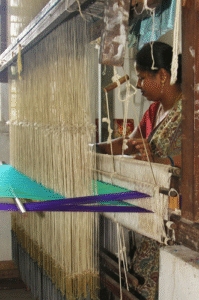
Women artisans constitute nearly 72 percent of India’s handloom workforce and about 56 percent of the handicrafts workforce, driving the sector’s evolution toward sustainable and community-led enterprises. Across GI-tagged cooperatives in Banaras and Kanchipuram, women weavers are increasingly engaging in design innovation and value-added silk products that blend tradition with new market opportunities (CII Blog, 2024).
India’s broader textile and apparel exports reached USD 35.87 billion in FY 2023–24, with sustainability-linked products forming an increasing share of new global sourcing contracts, reflecting the sector’s transition toward circularity and responsible manufacturing (Ministry of Textiles, 2024).
Circularity in India is no longer an idea waiting for adoption. It is becoming the framework through which artisans, exporters, and policymakers are rebuilding the value of textiles in a world that increasingly measures progress through purpose.
🌟Deadstock Sari Silk: Heritage Reborn
In India’s silk weaving belts, what was once considered waste is now becoming an asset. Cooperatives in regions like Kanchipuram (Tamil Nadu) and Banaras (Uttar Pradesh) are collecting deadstock sari silk, unused yardage, leftover brocades, and over-production fabrics and channeling them into new collections. These efforts preserve weaving traditions while creating value from materials that would otherwise go to landfill.
 For example, data from the Indian Silk Export Promotion Council (ISEPC) shows that India’s export of “silk fabrics, yarns and made-ups” rose to about USD 79.05 million in 2023-24, up nearly 9.7 % from the previous year. Within that, “silk waste” exports jumped by 72 % + to USD 38.35 million, indicating a growing market for by-products rather than just primary silk stock. (eoiparis.gov.in).
For example, data from the Indian Silk Export Promotion Council (ISEPC) shows that India’s export of “silk fabrics, yarns and made-ups” rose to about USD 79.05 million in 2023-24, up nearly 9.7 % from the previous year. Within that, “silk waste” exports jumped by 72 % + to USD 38.35 million, indicating a growing market for by-products rather than just primary silk stock. (eoiparis.gov.in).
Women-led cooperatives are the hub of this transformation. By upgrading looms, introducing traceability systems, and working with designers who integrate surplus fabrics into contemporary styles, these groups are turning materials once seen as “leftover” into “premium circular inputs.” In doing so, they boost both incomes and heritage-link value.
By aligning circular material flows with export dynamics, the sector is turning a challenge into an opportunity: heritage craft meets modern demand for sustainable sourcing.
💡Spotlight: ReshaWeaves- Circular Silk for a Digital Future
 In India’s silk ecosystem, a quiet transformation is taking place. ReshaWeaves, an initiative by ReshaMandi, is connecting traditional silk weavers to the digital economy while embedding principles of sustainability and circular growth.
In India’s silk ecosystem, a quiet transformation is taking place. ReshaWeaves, an initiative by ReshaMandi, is connecting traditional silk weavers to the digital economy while embedding principles of sustainability and circular growth.
Founded in 2020, ReshaMandi operates as India’s first farm-to-fashion digital platform for natural fibres, linking farmers, reelers, weavers, and retailers into one transparent value chain (CIO Insider, 2023). Through its data driven platform, it helps artisans source better-quality yarn, reduce material loss, and align production with real-time demand, a practical model of resource efficiency that lowers waste and boosts earnings.
ReshaWeaves, the consumer-facing brand of this ecosystem, launched its first store in New Delhi to promote sustainably sourced silk fabrics and handcrafted textiles. The brand offers traceable materials from verified weaving clusters, ensuring fair pricing and direct market access for artisans (Business Standard, 2022).
ReshaMandi’s technology-led model demonstrates how traditional sectors can move toward circularity through digital transparency. By integrating farm-level traceability, quality mapping, and waste tracking into the silk value chain, it is helping transform how India’s oldest luxury fabric adapts to modern sustainability standards.
Circularity here is not about replacing craft but redefining it using technology to extend the life, value, and story of every thread.
🛣️ The way forward
India’s silk sector is at a turning point where legacy and innovation converge. To scale circularity across its textile ecosystem, three priorities stand out:
1. Circular Infrastructure – Strengthen the PM MITRA Parks framework with waste-tracking systems and circular supply-chain incentives.
2. Digital Empowerment – Expand access to platforms like ReshaMandi that use traceability, quality mapping, and AI to reduce waste and increase artisan earnings.
3. Inclusive Growth – Equip women-led cooperatives with finance, training, and global market links to transform traditional weaving into a sustainable enterprise.
Circular silk is no longer a vision. It is India’s path to weaving prosperity with purpose, one thread, one artisan, one innovation at a time.
🚨Hottest Grants this Week
💰AndPurpose Grants
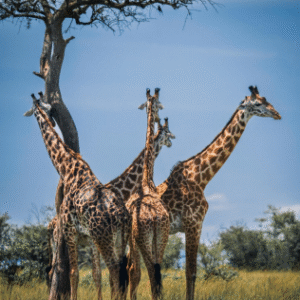 The Danforth Conservation Grants 2026, offered by Roger Williams Park Zoo through the Sophie Danforth Conservation Biology Fund (SDCBF), support global projects protecting threatened species and habitats. The grant funds fieldwork, education, and conservation research with a focus on collaborative, ethical, and sustainable methods. Open to organizations worldwide (not individuals), applications must be in English and AI-free.
The Danforth Conservation Grants 2026, offered by Roger Williams Park Zoo through the Sophie Danforth Conservation Biology Fund (SDCBF), support global projects protecting threatened species and habitats. The grant funds fieldwork, education, and conservation research with a focus on collaborative, ethical, and sustainable methods. Open to organizations worldwide (not individuals), applications must be in English and AI-free.
Deadline: 14th November, 2026
Learn more
 The 2026 Fisher Family Summer Fellows Program at Stanford University invites mid-career professionals from developing democracies to enhance their leadership in democracy, development, and rule of law. This fully funded, three-week residential program brings together 28 30 global changemakers for intensive training, collaboration, and academic engagement. Applicants must demonstrate proven leadership, commitment to reform, and proficiency in English.
The 2026 Fisher Family Summer Fellows Program at Stanford University invites mid-career professionals from developing democracies to enhance their leadership in democracy, development, and rule of law. This fully funded, three-week residential program brings together 28 30 global changemakers for intensive training, collaboration, and academic engagement. Applicants must demonstrate proven leadership, commitment to reform, and proficiency in English.
Deadline: 15th January, 2026
Learn more
🌟Join the Movement | AndPurpose Forum, 2025 Mumbai
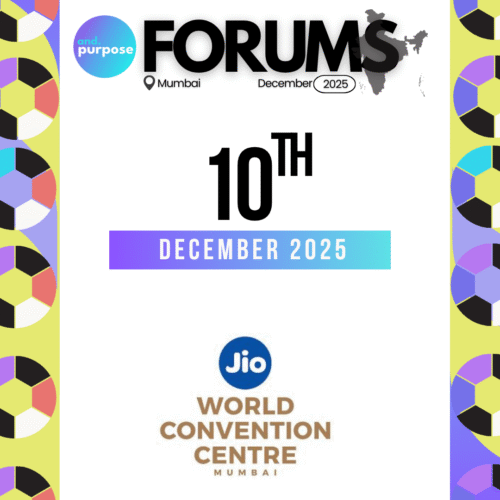
🎟 Tickets are live -reserve your seat today
Get 10% off on your ticket with code IAMCHANGE before seats fill up.
If you’ve already purchased your ticket, no action is needed- your pass remains valid for the new date and venue.
Purpose-led innovation is reshaping how industries create, collaborate, and contribute to change. Be part of the conversation at the AndPurpose Forum 2025, Mumbai, where circularity, creativity, and impact come together.
Engage with leaders, entrepreneurs, and creators who are designing solutions for a more regenerative world. From the Social Innovation Exhibit (SIE) to impact partnerships and sponsorships, discover opportunities to connect, co-create, and catalyze the next wave of sustainable growth.
🤔What next ?
Circularity is now more than a movement; it is a mindset redefining how India creates, collaborates, and competes.
From digital silk platforms to women-led cooperatives, each thread of innovation strengthens the fabric of sustainable growth. Join us as we continue exploring how heritage, technology, and purpose can shape the industries of tomorrow.
With Love & Purpose
Team AndPurpose

